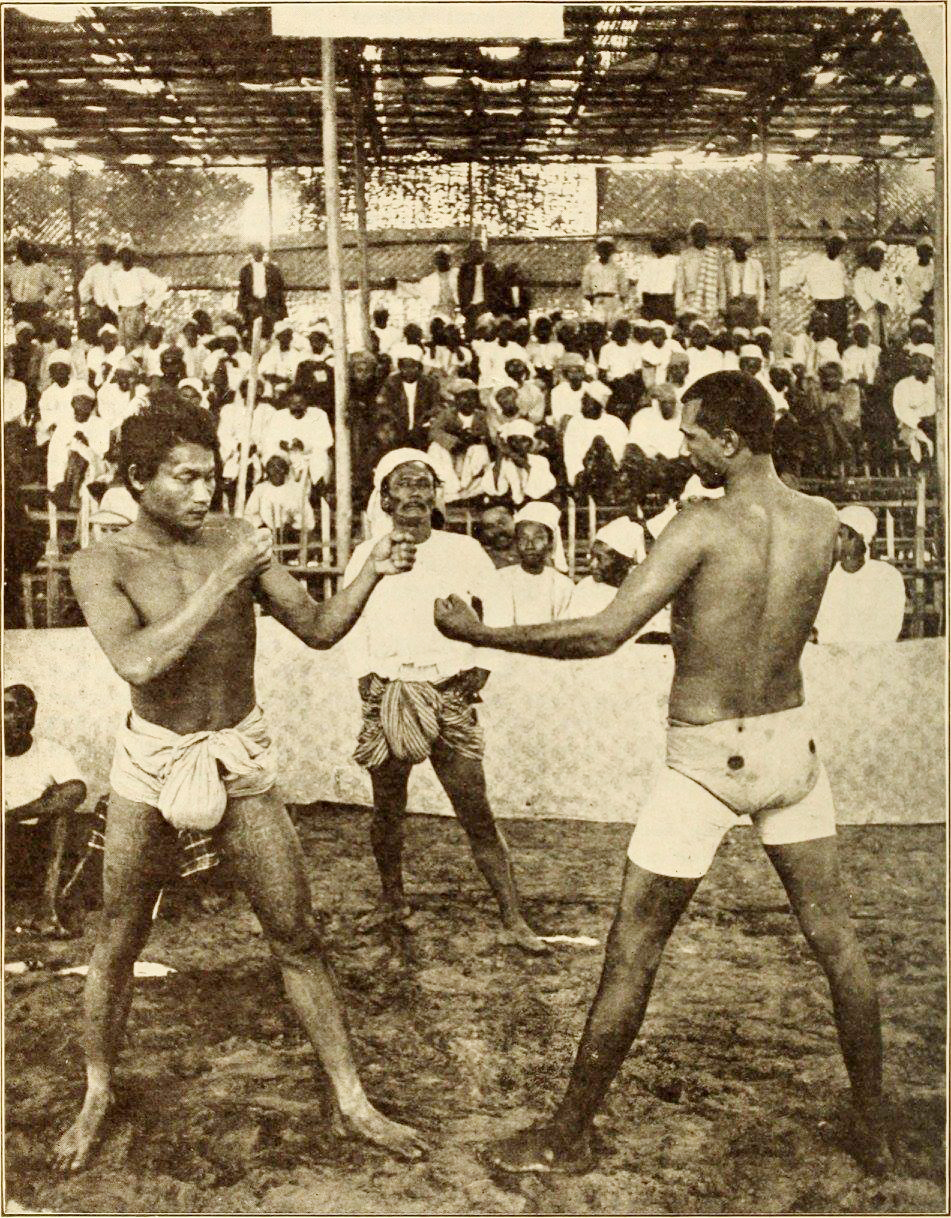LETHWEI AMERICA

Modern Lethwei History
Despite the harsh measures implemented to ban the practice of Lethwei, it did not disappear under the British rule of the late 19th century. To the contrary, it was actively, if not cautiously maintained by the peoples living in the rural villages.1,2,3
After World War II Lethwei began to see a steady revitalization. During this period of restoration and up to the present day, Lethwei has been able to maintain its traditions as well as offer adaptations to make it more commercially appealing. From its traditional practice with few rules in the dirt circles of rural villages to the more modern context in major cities with full-size rings, the practice of Lethwei has persevered.1,2

In 1946, nine survivors of the Military Athletic Club formed the National Bando Association (NBA) in Burma. The goal of the National Bando Association was a unification of the traditional Myanmar (Burmese) martial arts of Lethwei, Bando, Banshay, and Naban (collectively known as Thaing) under a single banner. This effort was directed by U Ba Than Gyi who was elected president of the National Bando Association. In addition to serving as President of the National Bando Association, U Ba Than Gyi would also become the director of the physical education and athletics of Burma. During this time, he would help preserve and restore some of the traditional tribal and ethnic martial arts the Mon, Kayin, Kayah, Chin, Shan, Wa, Naga, Rakhine, Kareni, and others. The martial arts of many of these groups were on the verge of extinction as a result of centuries of wars, subjugation and western colonization.4,5,6,7,8
By the end of the 1940s and into the early 1950s, U Ba Than Gyi had taken several Burmese martial arts methods and synthesized them into what he named “Hanthawaddy Bando”. The Hanthawaddy Kingdom was the last ethnic city-state of the Mon people which was conquered and subjugated by the Burmese warrior king Alaungpaya in the 18th century. Hanthawaddy Bando is considered to be one of several recognized Bando systems practiced within and outside of Myanmar today. During this time, U Ba Than Gyi also modified the traditional hard “anything goes” style of Lethwei into what he labeled Burmese Bando Boxing. This revised form of Burmese Boxing combined certain elements of traditional Lethwei with those of the Hanthawaddy system of Bando.4,9,10,12
In contrast to traditional practice of Lethwei, the modifications found in Burmese Bando Boxing were intended to reduce serious injuries and have more appeal for to the general public. Burmese Bando Boxing utilized boxing gloves, headgear, weight classes, and timed rounds. The more damaging techniques such as elbowing, head-butting, clinching, trapping, and throwing were not permitted.6,7,12,13
References
1 Rebac, Z. (2003). Traditional Burmese Boxing: Ancient and Modern Methods from Burma’s Training Camp. Paladin Press.
2 Giordano, V. (2012). Burmese Lethwei: The Ancient Art of Bare-Knuckle Fighting. Muay Thaimes. Vol. 6; No. 1.
3 Unlimited Martial Arts (2005). Available: http://unlimitedmartialarts.blogspot.com
4 Itʼs a Myanmar Thaing. Myanmar Times. (March 17, 2016) https://www.mmtimes.com/sports/martial-arts/19513-it-s-a-myanmar-thaing.html
5 Green, T. A., ed. (2001). Martial Arts of the World: An Encyclopedia. ABC-CLIO: Santa Barbara.
6 American Bando Association. (2018). About Sayaji U Ba Than Gyi. https://americanbandoassociation.com/about-us/history/about-sayaji-u-ba-than-gyi/
7 Martin, Michael. (2001). A Glimpse into the Traditional Martial Arts in Burma. The Journal of Burma Studies. Vol. 6
8 Winborne, D. G. (2014). An Exploration of the Bando System and Other Ancient Burmese Fighting Traditions: History and Current Practices. Journal of Asian Martial Arts. vol. 23.
9 Gyi, M. (2014). 55 Years of Bando in America. The American Bando Association.
10 Gyi, M. (2000). Bando: Philosophy, Principles, and Practice. Private Publication.
11 American Bando Association. (2018). Hanthawaddy Bando: A Summary. (https://americanbandoassociation.com/about-us/history/hanthawaddy-bando-a-summary/
12 Martin, M. F. (Mar. 1986). Bando: 25 Years in America. Inside Kung Fu
13 Walls, L. (Feb. 1979). Bando Sport of Kings. Black Belt